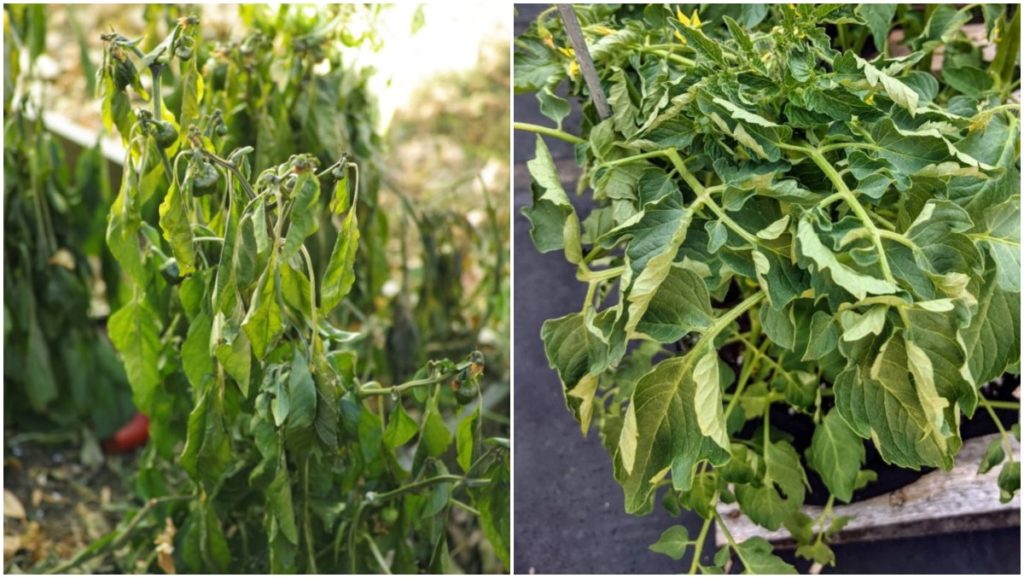
Every year we gardeners spend the entire growing season holding our breath.
Seriously, we do. Think about it for a moment.
We wait patiently in the spring, fingers crossed, hoping our seeds will come up. Did we plant them too early? Are we too late? Are they getting enough sun?
We tentatively move our transplants outside, hoping they won’t get flattened by the wind or a surprise final frost.
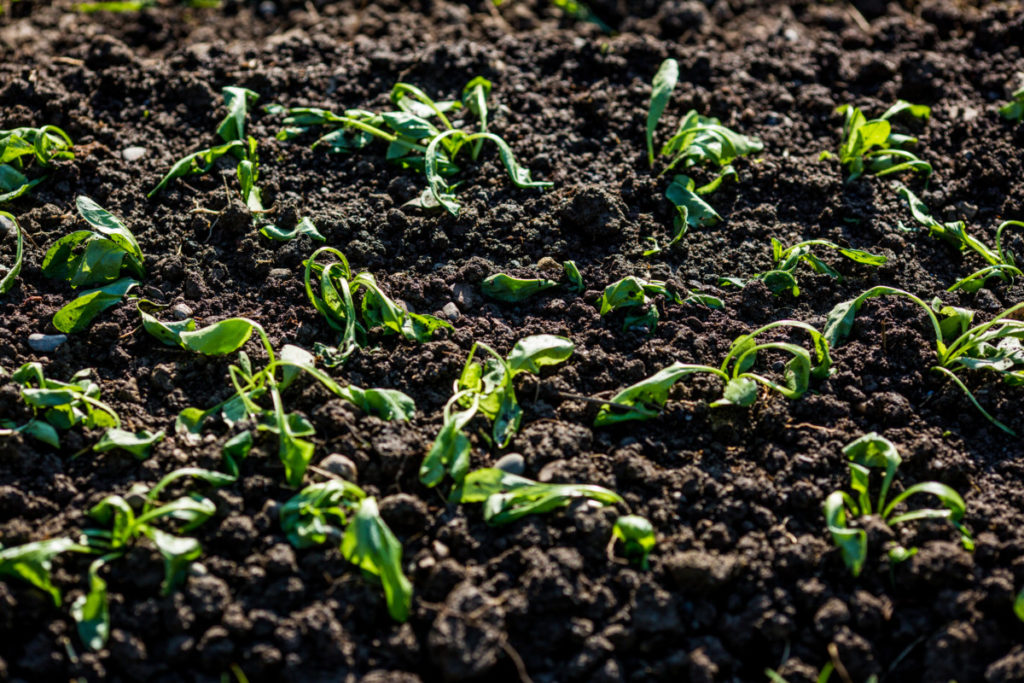
Once we successfully (or not) make it past spring, we continue holding our breath, waiting for the first sign of potato beetles or tomato hornworms, blight or blossom end rot.
See? Gardening is a high-stakes business!
Even waiting for the good stuff keeps us on our toes. Is that a blossom? Oh yeah, peppers are on their way! Green tomatoes! We’ll be eating salsa soon enough, honey. What on earth are we going to do with all of this zucchini? I can’t see the kitchen counter anymore!
But the real suspense shows up in the form of garden problems. In the end, it’s not uncommon to lose a plant here and there or even a whole crop.
But what do you do when you notice your entire garden seems to be on the decline?
I’ve had it happen to me several times. Everything is going great, and then one day, you notice a plant looks a little sad. You start looking around, and you notice everything looks a little sad. Leaves are yellowing, or your plants are wilting, sometimes they’re even brown and crunchy. Wait, is my entire garden dying?
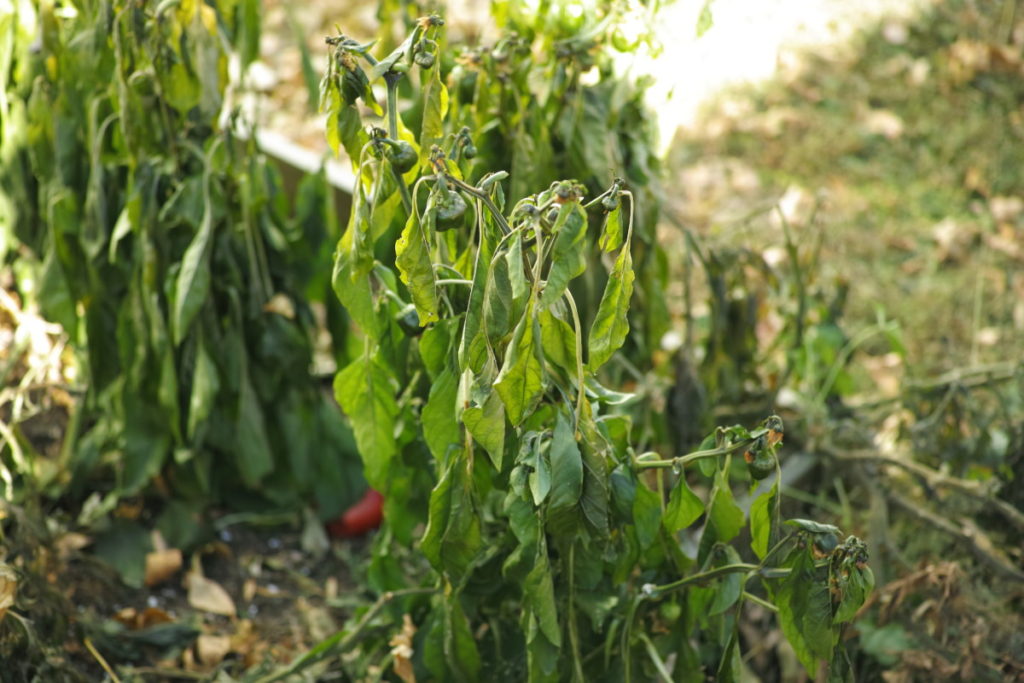
What do you do when your whole garden is dying?
Luckily, when it’s your entire garden that seems to be tanking, the problem is pretty easy to figure out. More importantly, it’s usually easy to correct, too.
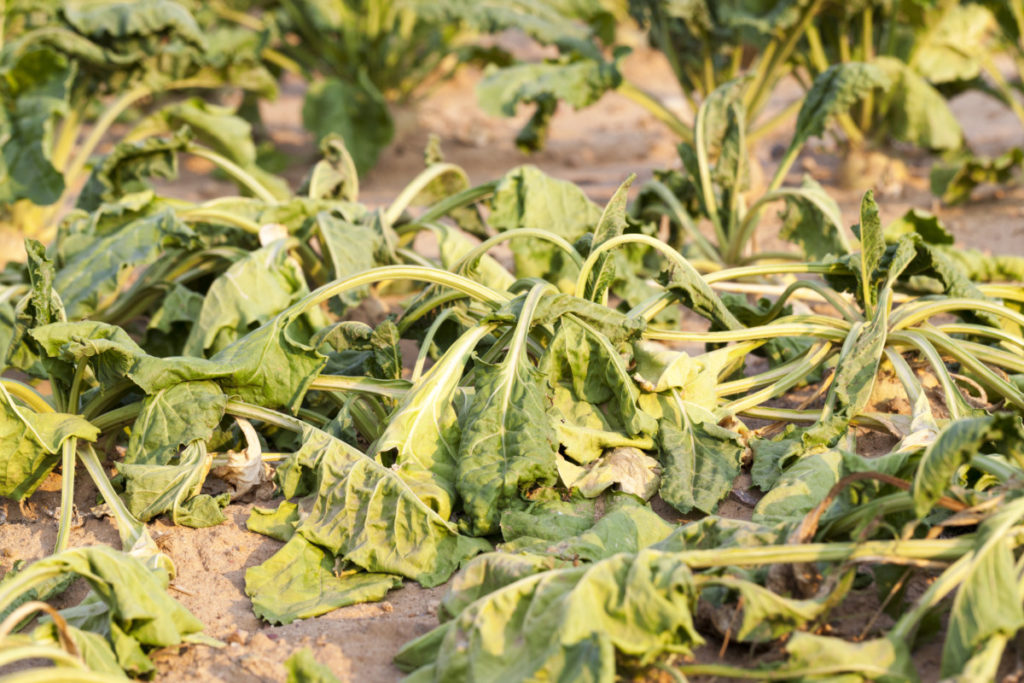
Let’s take a look at the most common reasons why your garden might be struggling this season. Then, with each issue, I’ll also tell you how to get back on track so your garden can start producing again.
1. Too Much Water
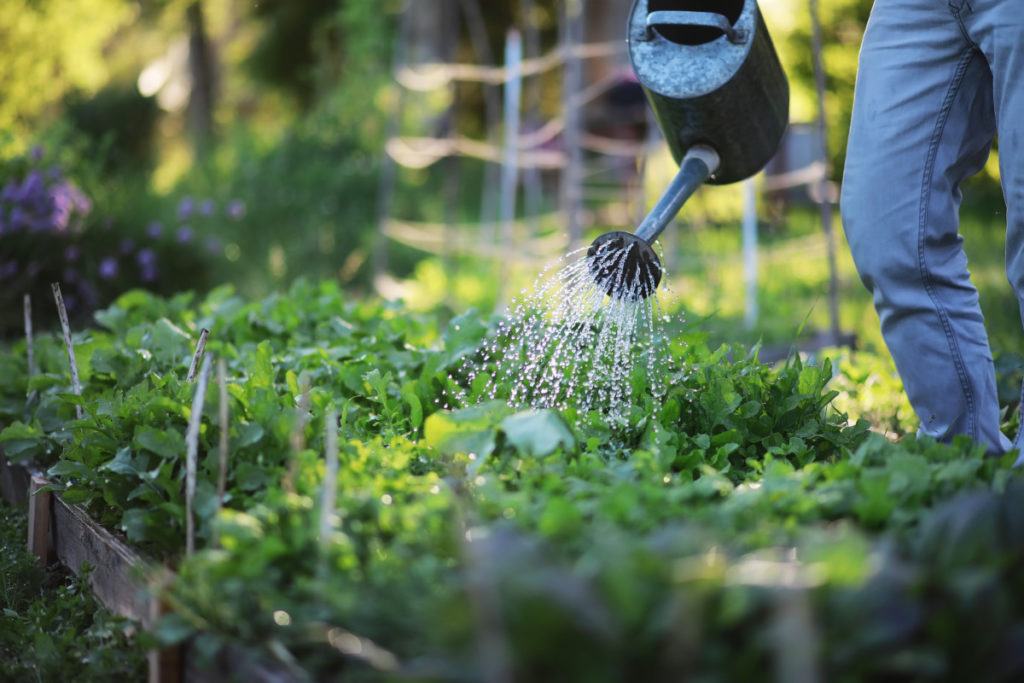
Yeah, you may be surprised by how often this is the problem.
Too much water is often the culprit in the case of new gardeners. They break out the hose and water away at the first sign of wilting or yellow leaves without checking the soil moisture first. Sometimes, yellowing leaves and even wilting can indicate root rot from too much water, not too little. Too much water can easily result in a dying garden.
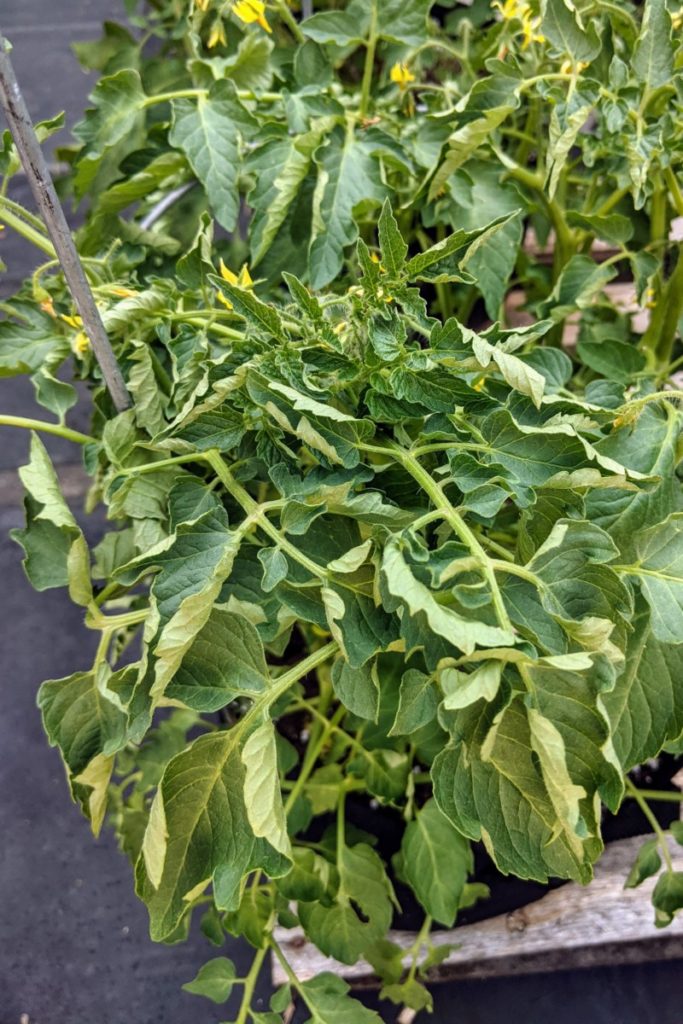
Or it may be that they’re watering indiscriminately. I’ve often told friends a watering schedule is important whether you have a garden or houseplants. You should be checking your plants periodically throughout the week to see when they need water. But the key here is in the word checking. Check the soil before you reach for the water.
One of the best ways to avoid over-watering is to test the soil around your garden. Dig down an inch or two with your hands and grab a handful of soil. Squeeze it into a ball. If it holds its shape without making your hands muddy, you’ve got enough moisture. If it crumbles apart, the soil is too dry.
For container gardening, I stick my finger down into the soil of each container. If I can’t feel moisture, it’s time to water.
Fixing the Issue
This is an easy fix – stop watering your garden. Let it dry out and give the roots a chance to breathe. For container gardens, it’s helpful to gently move soil away from the root zone for a few days to help dry out water-logged plants.
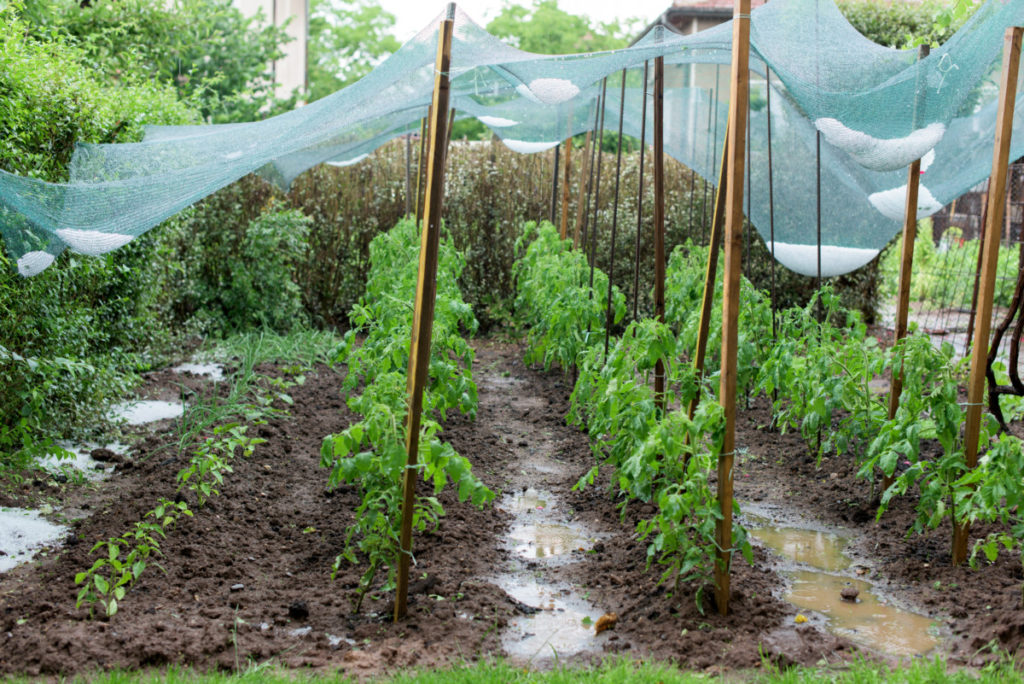
Unfortunately, you’ll get the odd season where it seems to rain nonstop. In this case, you’re at the mercy of mother nature. The best you can do is hope for a break in the weather.
2. Not Enough Water
On the other side of the watering coin is not enough water. Nothing leads to a garden dying quicker than not enough water.
Plants need water to help them process nutrients in the soil and to grow and produce fruit. If your garden isn’t getting enough water, the plants will slowly begin to shut down. This usually begins at the base of the plant, where you will see yellowed, brown or even crunchy dried leaves.
Fixing the Issue
Remember, the best way to determine if your soil needs moisture is by getting your hands in the dirt, not just by looking at the plants.
For strong, drought-resistant plants, you should give them a thorough soaking rather than a light watering. When you water plants deeply, they stretch their roots deeper into the ground giving them access to deep underground moisture.
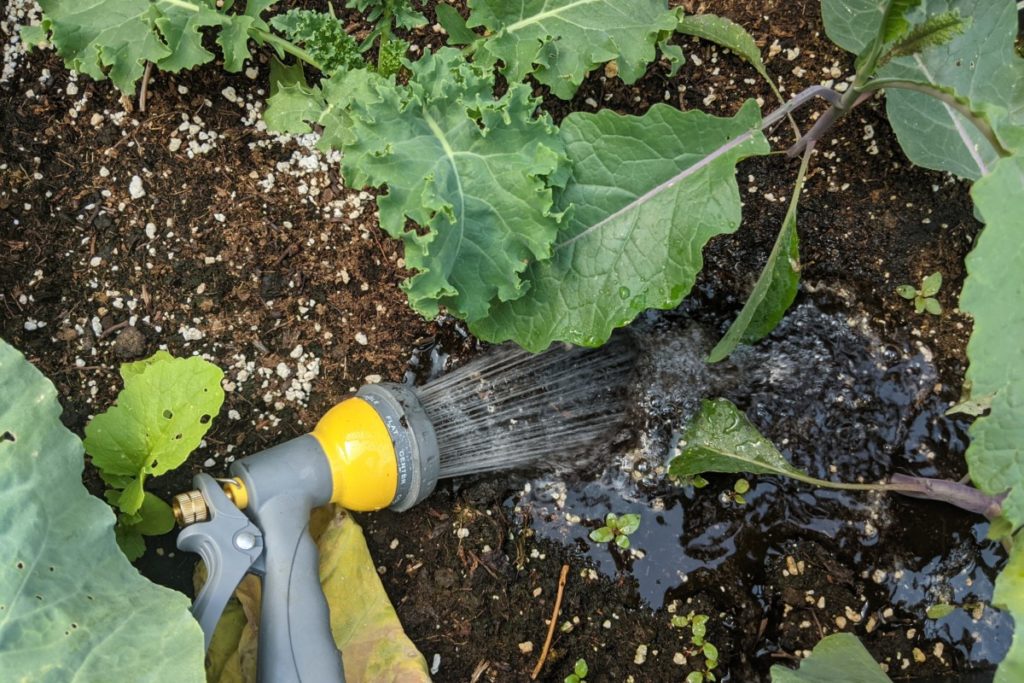
If it’s been dry, the water may run off at first, rather than soaking into the ground. I find poking a few holes around the root zone will help the soil take in water again. You want to soak the root zone until the soil is dark brown and water begins to sit on top of the soil.
3. Feed Me, Seymour!
Does anyone else out there quote “Little Shop of Horrors” when they’re fertilizing their plants?
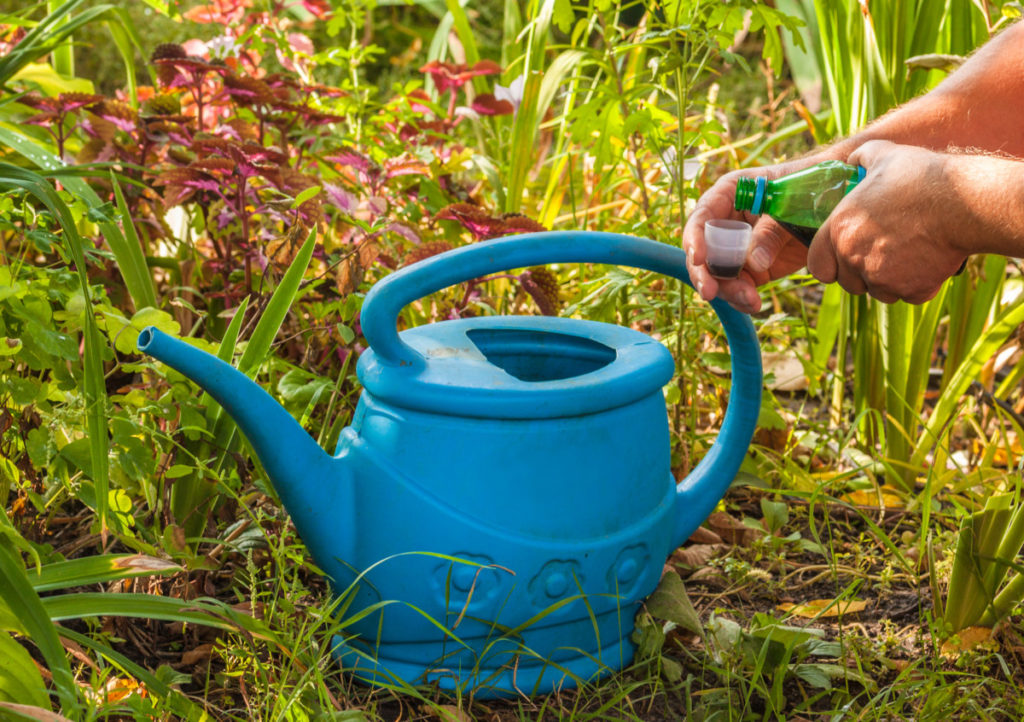
I’m notoriously bad at this one. I fertilize my garden at the beginning of the season to get it off to a great start. Then summer kicks in, I get busy, and suddenly I’m wondering why everything is stagnant, or worse my entire garden is dying. Oh yeah, probably because I haven’t bothered to feed my plants in a while.
This is often evident when plants simply slow down. For example, they stop growing taller and fuller, or fruit production stops or drops off entirely. If you do a lot of container gardening, feeding your plants regularly is especially important as nutrients wash out of the soil quicker than a garden grown directly in the ground.
Fixing the Issue
It’s time to feed your veggies!
When you’re feeding beyond those initial spring feeds, choosing the right fertilizer blend for each plant is important. Nutrient needs change whether a plant is developing or producing fruit. While tomatoes need a good nitrogen boost in the spring, give them too much nitrogen mid-season, and you’ll end up with beautiful leaves and very little fruit.
It’s a good rule of thumb for plants you’re growing for fruit production, rather than to eat the leaves or greens.
How often you fertilize throughout the season depends on each plant, your soil type and things like how often it’s been raining. It’s best to set up a schedule to fertilize, and then each time, you can decide which plants need it and what fertilizer each will get. Write it on your calendar or set a reminder on your phone. A good rule of thumb is to fertilize your garden every four weeks.
If you’re a container gardener, you’ll need to fertilize more frequently than someone growing plants directly in the ground. Potted plants lose nutrients faster because they’re watered more often, and that water runs out the bottom of the containers. They also have less soil to draw nutrients from than a traditional garden.
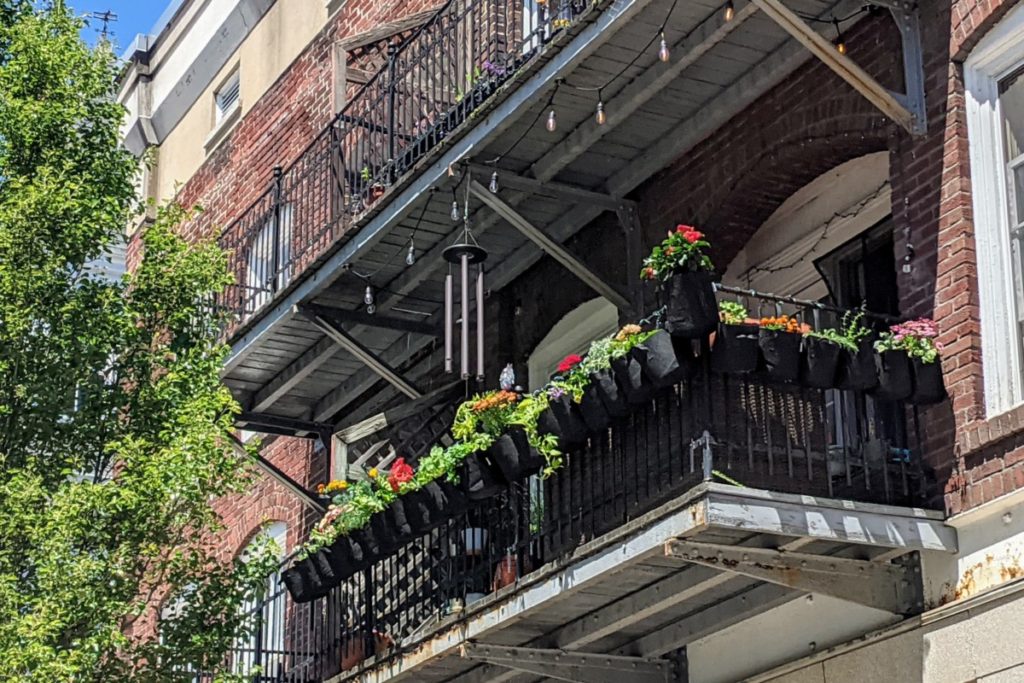
I mix up fertilizer for my rooftop garden every two weeks and make the rounds, and my plants are pretty happy. I do nearly all of my gardening in grow bags, though, so my plants are more likely to lose nutrients faster.
Pre-Season Prep
A great way to help your plants maximize their available nutrients is to use mycorrhizae in your garden. These beneficial fungi will increase your plant’s root zone, making it easier for them to take up nutrients. Mycorrhizae also secrete enzymes that help soil nutrients become more bioavailable (think easier to digest) to plants.
I’ve had great results using Big Foot Organic Mycorrhizal Fungi Water-in Concentrate.
Consider top-dressing your plants with worm castings or compost throughout the season. Both of these will give your plants a slow-release supply of nutrients.
4. Routine Maintenance Prevents a Dying Garden
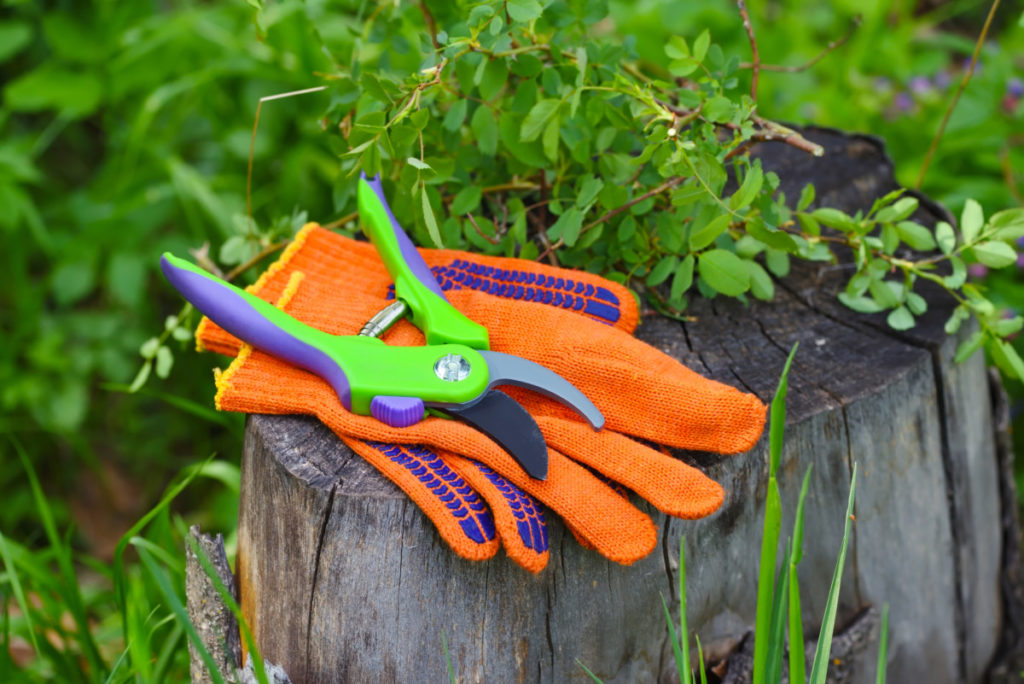
Look, I get it; summers are crazy. Short of the holidays, no other stretch on the calendar seems to fill up faster. So, it’s easy to let routine gardening chores get away from you. But these simple tasks add up to healthier and more pest and disease-resistant plants in the long run. Not to mention good general maintenance leads to a better yield.
If your entire garden looks like it’s seen better days, maybe you’ve let it go a bit. The weeds are getting a little out of hand, and that zucchini is clearly set on world domination. No worries, you’ve got this. Grab your gardening gloves, your pruning shears and a bucket.
Fixing the Issue
Prune
Just like you, your plants need a decent haircut to keep them looking their best. Routine pruning of your plants encourages them to put their energy into what you want most – more veggies, herbs and flowers. Most gardeners skip this and let their plants go wild. If you trim back over-eager plants, it encourages them to stay put and put their energy into producing fruit instead.
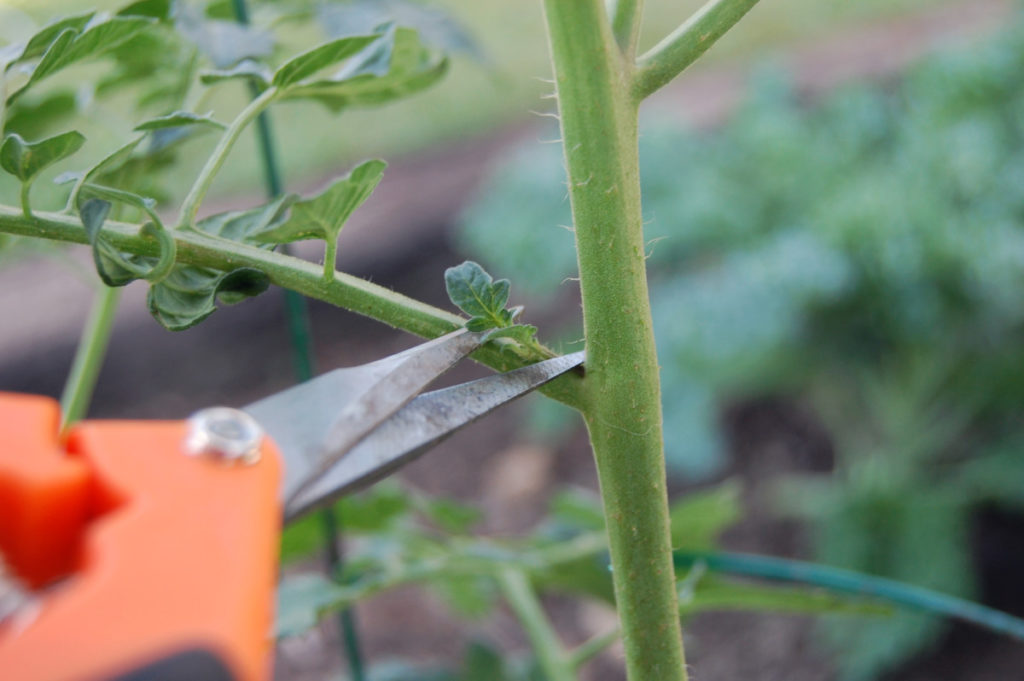
This is especially helpful for tomatoes. Yes, those suckers that grow from the crotch of the tomato will eventually produce more fruit, but if you live in a place with a shorter season, you’ll want to prune your tomato suckers to encourage more actual tomatoes.
And don’t forget herbs! Basil is easily pruned to produce large, bushy plants that will keep you in pesto for ages.
Make pruning a part of your routine maintenance, and you’ll notice a tidier and more bountiful garden in general.
Weed
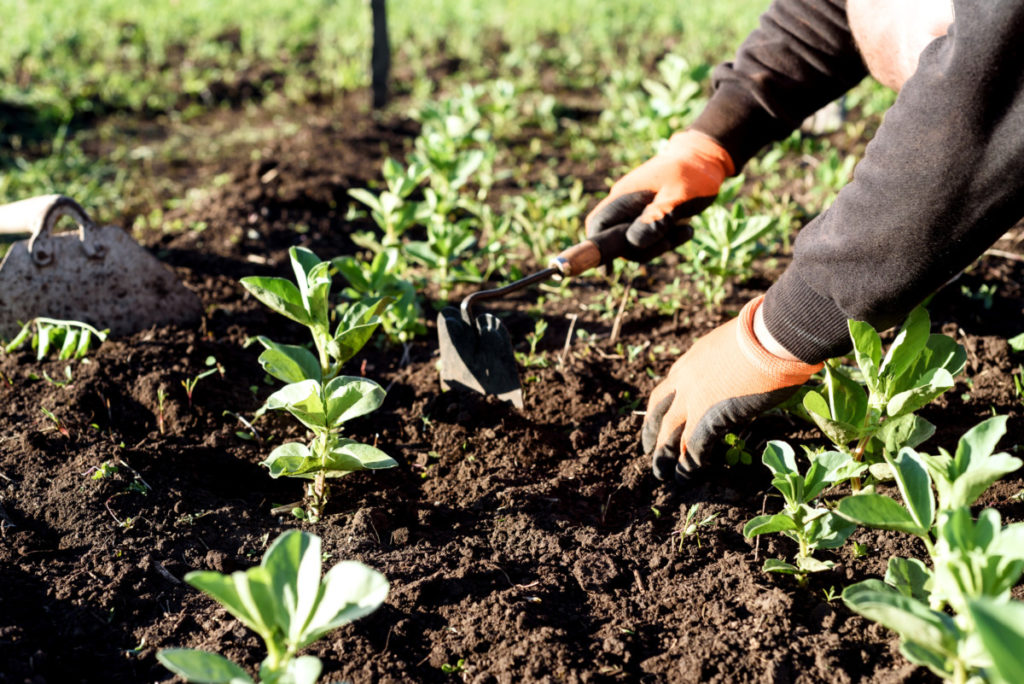
I hate weeding. Of all the gardening tasks out there, this one tops my list as the worst. Even gardening on the second story of a building and using containers, I still find weeds!
If you do only one thing as part of a maintenance routine for your garden, make it weeding. Every weed that pops up in your garden is there to outcompete your plants for nutrients, sun and water. So don’t give weeds a chance; yank them up early and often to prevent your garden from dying.
If you’ve let the weeds get out of hand, it can be tough to battle them back, but the effort will be worth it in the end. Consider mulching your pathways and around the base of your plants to help keep weeds at bay. Not only will mulching help with weeds, but it will also lock in moisture (I feel like I’m selling hair conditioner), making your plants more drought resistant.
Pick Your Produce
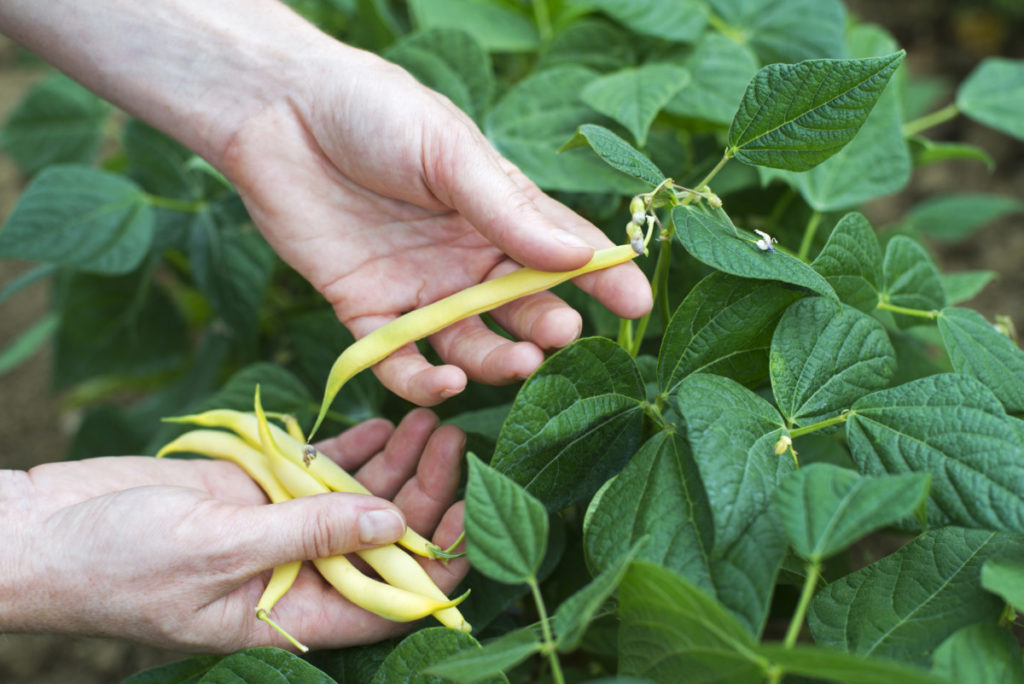
I know this one seems obvious, but you would be surprised at how often it gets put off. Pick your produce. If you leave produce on a plant for too long, the plant will stop producing or, worse, go to seed.
For that reason, never go out to your garden without grabbing a basket and scissors. Pick whatever is ripe. Even things that could finish ripening off the vine should be picked. The more you pick, the more your plants will do their best to produce more fruit.
5. Pest or Disease
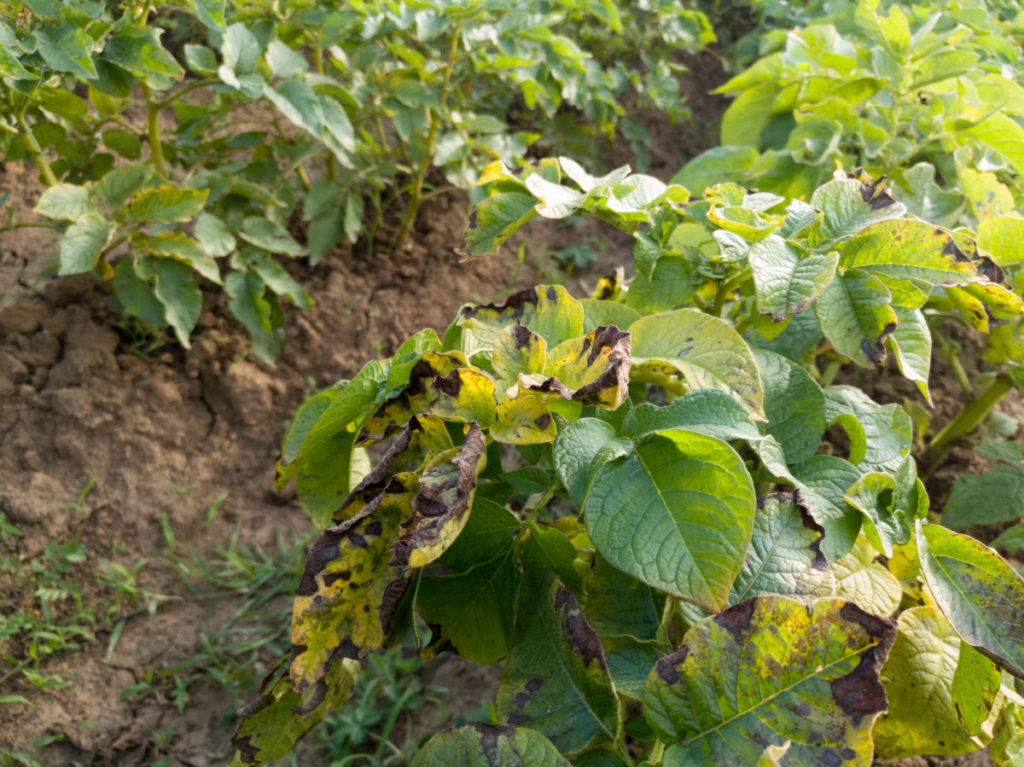
It’s quite rare that one pest or disease will wipe out an entire garden, but that doesn’t mean it’s not possible. Instead, it’s more likely that you’ll notice one or two plants looking off before a full garden infestation happens.
However, if you’ve been away on vacation or haven’t checked in with your garden in a while, pests and disease can quickly get out of hand. Soilborne diseases can spread especially quickly if it’s a rainy season. Ultimately, this can lead to a dying garden.
Fixing the Issue
The first thing you’ll need to do is to determine what’s killing your garden. Check the leaves, both top and bottom, for insects, eggs, and insect damage. Take a few photos to help you identify any pests you don’t recognize.
If you don’t see the telltale signs of a pest invasion, begin looking for signs of disease such as yellowing leaves, leaves with dark brown spots, powdery spots, or the brown spots of blossom end rot or blight on fruits. Again, having photos makes it easier to identify the particular disease you’re dealing with.
Once you’ve identified your pest or disease, begin treatment.
It’s best to remove severely infected or infested plants to protect against further damage to other plants in your garden. Don’t compost these, or you’ll just be creating a cyclical problem for yourself. Many pests and plant diseases can overwinter in the soil.
If plants have minor damage, trim away the affected leaves or stems to encourage them to put their energy into new growth rather than healing.
To Spray Or Not To Spray
So often, we reach for a pesticide when our garden is being attacked. It’s important to weigh your options before you start spraying. When you spray with a pesticide, you’re killing more than your intended target. You can kill off beneficial insects that protect your garden; I can think of at least twelve insects that are probably out in your garden right now, keeping unwanted pests at bay.
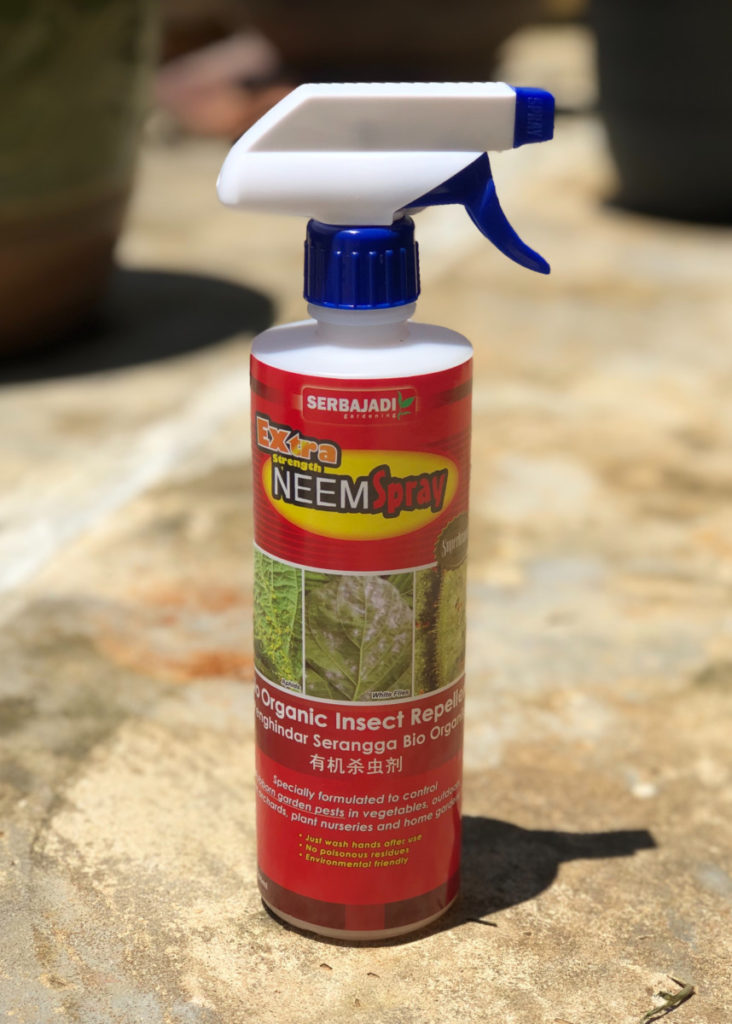
If you do decide to spray, I favor organic neem oil. Neem oil is a great general pesticide that covers a multitude of sins – insects, mildew, mold, rusts, scale, and mites, to name a few. I feel better about using it as it only affects soft-bodied leaf munchers, so most of the beneficial bugs in their adult stage are safe. In addition, it’s one of the more environmentally conscious ways to go if you choose to use a pesticide.
Worm casting tea is also another great option to use as a foliar spray in the war against pests and disease, and it makes a great preventative. It also provides extra nutrients for plants too.
6. Signing Off for the Season
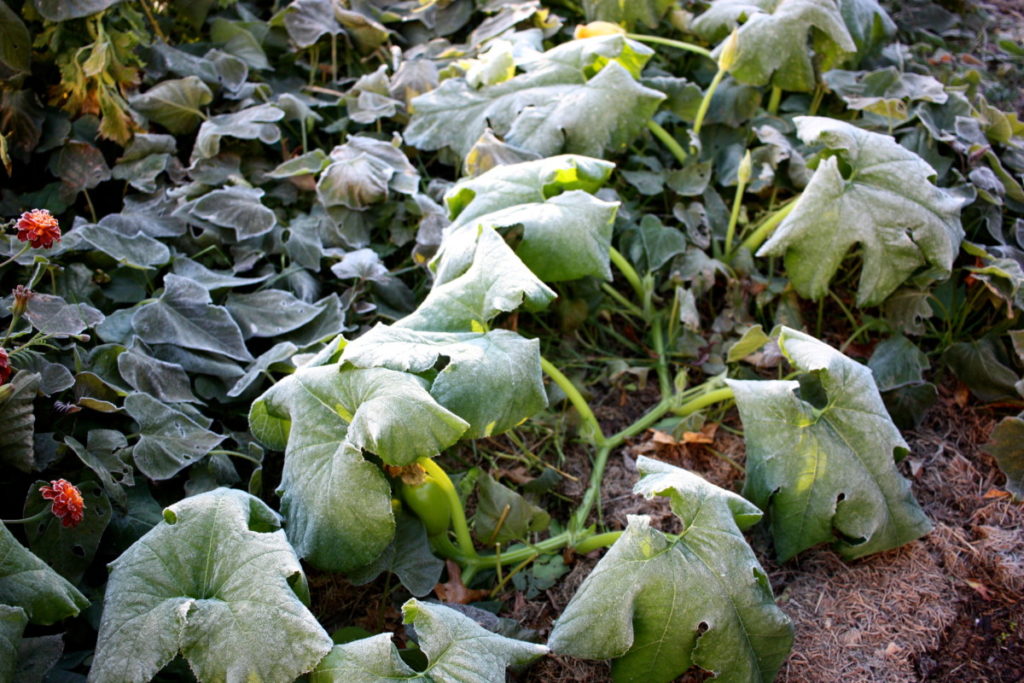
Finally, we come to the last problem, which isn’t necessarily a problem. Late in the growing season, your plants will start to look bedraggled. Then, as your garden begins to slow its production and die off, plants will let themselves go. And that’s just fine; they’ve put in a hard season, they’re ready to rest.
If it’s late in the season and you’re noticing an overall decline in your garden, there isn’t too much you can do. And maybe that’s a good thing; you might be at the point where one more tomato or zucchini on your counter is enough to make you scream.
At this point, you have a few options.
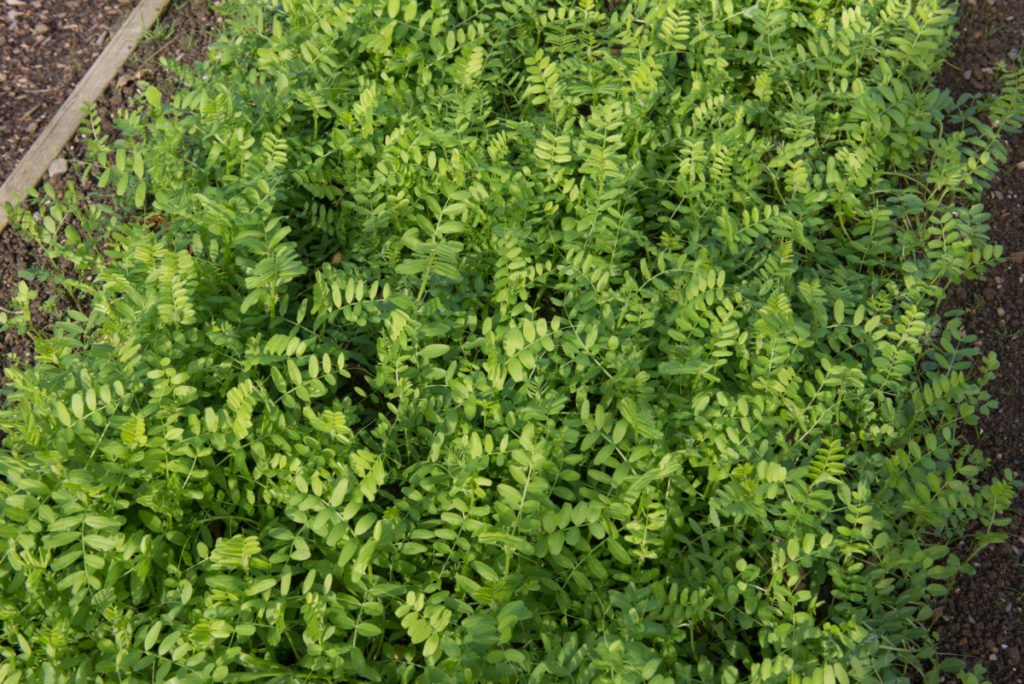
You can simply let it go and relax. There’s something satisfying in watching your garden die at the end of the season. On the other hand, you could start looking into ways to extend your growing season. If you choose to do that, I would suggest giving your garden a heavy pruning and fertilize. You can pull up seriously declining plants and start next year’s harvest in the fall. Or you can consider growing a green manure cover crop that will nourish the soil over winter.
Parting Advice
If I could leave you with one important piece of advice, it’s this – a garden is a microclimate, and you need to treat it as such. We often get focused on one plant (usually the one that’s struggling) without bothering to take in the whole picture.
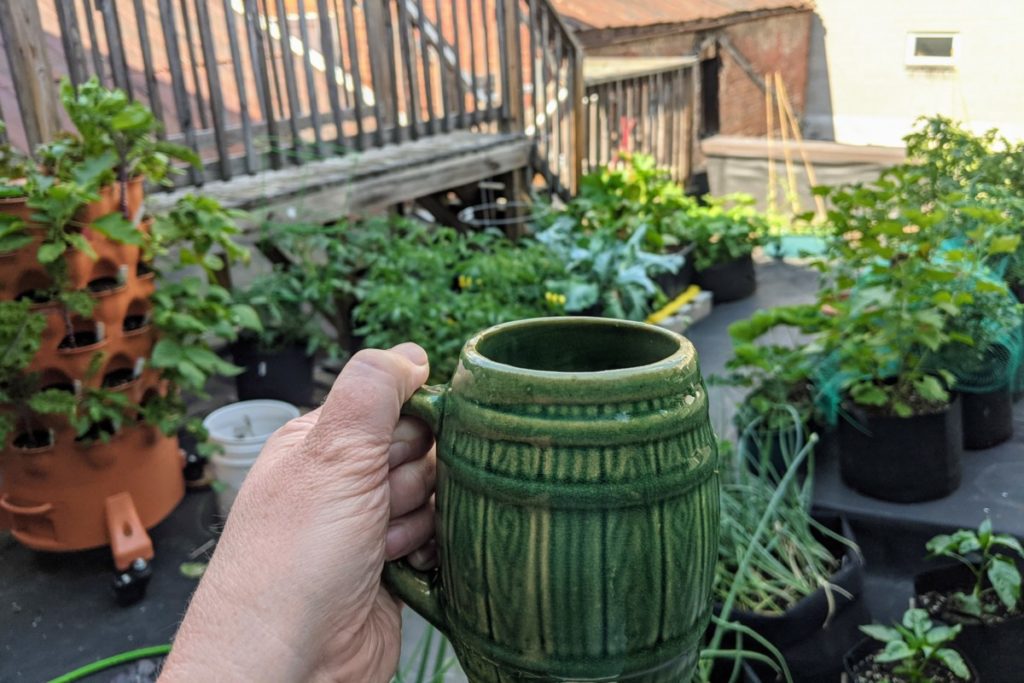
Every morning I take my coffee out on my roof to greet the day and my garden, rain or shine. Then, before I start checking individual plants, I stand for a moment and just take in the entire thing.
“Look, Simba, everything the light touches….”
Sorry, I couldn’t help myself.
It’s this initial big-picture look that clues me in to what my garden will need before I even start poking my fingers in the dirt and saying hello to my little green babies. Yes, I refer to my plants as my babies, don’t judge me.
Take the time to look at the whole entity, and rarely will you find yourself with a problem that leads to your whole garden dying.

Get the famous Rural Sprout newsletter delivered to your inbox.
Join the 50,000+ gardeners who get timely gardening tutorials, tips and tasks delivered direct to their inbox.

